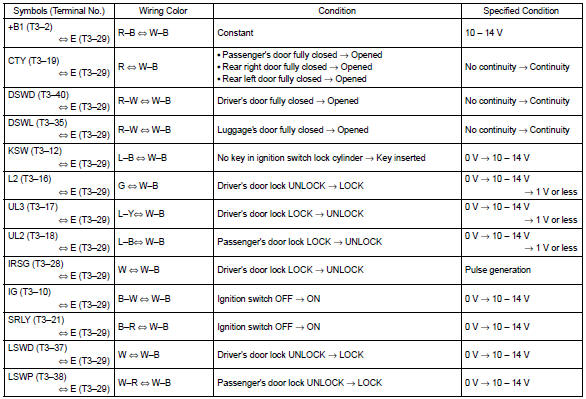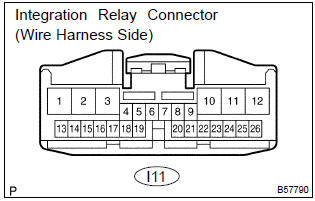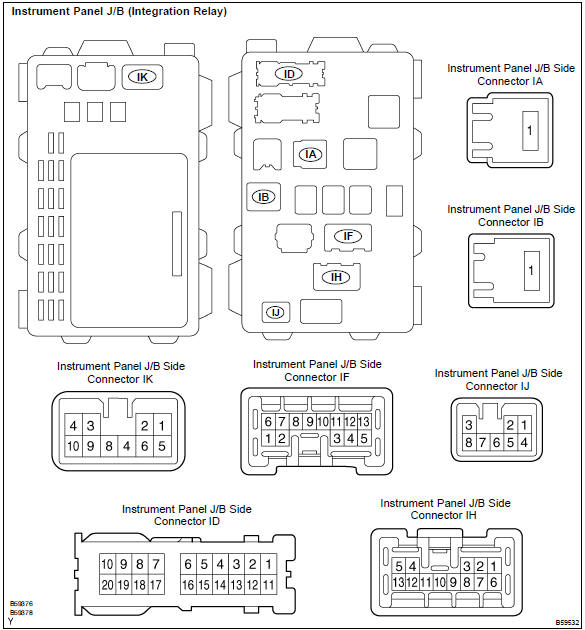Toyota Corolla (E120) 2002–2008 Repair Manual / Diagnostics / Toyota vehicle intrusion protection system / Terminals of ecu
Toyota Corolla (E120): Terminals of ecu
1. Inspect tvip ecu

- Inspect the ecu–b, dome and ecu–ig fuses.
- disconnect the tvip ecu connector, and the continuity and voltage of check each terminal of the disconnected connector.
Standard:

If the result is not as specified, the vehicle’s side may malfunction.
- Reconnect the tvip ecu connector, and the continuity and voltage of check each terminal of the disconnected connector.
Standard:

If the result is not as specified, the tvip ecu may malfunction.
2. Inspect integration relay

- Disconnect the connector and check the continuity of each terminal of the disconnected connector.

If the result is not as specified, the vehicle’s side may malfunction.
3. Inspect instrument panel j/b (integration relay)

- Inspect the door fuse.
- disconnect the id connector of the instrument panel j/b, and check the continuity of each terminal of the disconnected connectors.
Standard:

If the result is not as specified, the vehicle’s side may malfunction.
Other materials:
If the vehicle becomes stuck
Carry out the following procedures
if the tires spin or
the vehicle becomes stuck
in mud, dirt or snow:
Recovering procedure
1. Stop the engine. Set the
parking brake and shift the
shift lever to P.
Do not press the shift release button
after shifting the shift lever to P.
2. Remove the mud, snow ...
Inspection
1. Intake air flow meter sub–assy
Inspect the intake air flow meter resistance.
Using an ohmmeter, measure the resistance between
terminals tha and e2.
Resistance:
at –20 c (–4 f) 13.6 To 18.4 KΩ
at 20 c (68 f) 2.21 To 2.69 KΩ
at 60 c (140 f) 0.49 To 0.67 ...
Towing your vehicle with 4 wheels on the ground
To prevent damage to your vehicle, perform the following procedures before towing.
1 Shift the shift lever to N.
2 Turn the engine switch to the “ACC” position (without a smart key system) or
ACCESSORY mode (with a smart key system).
(, 166) Ensure that the audio system and other powered de ...


